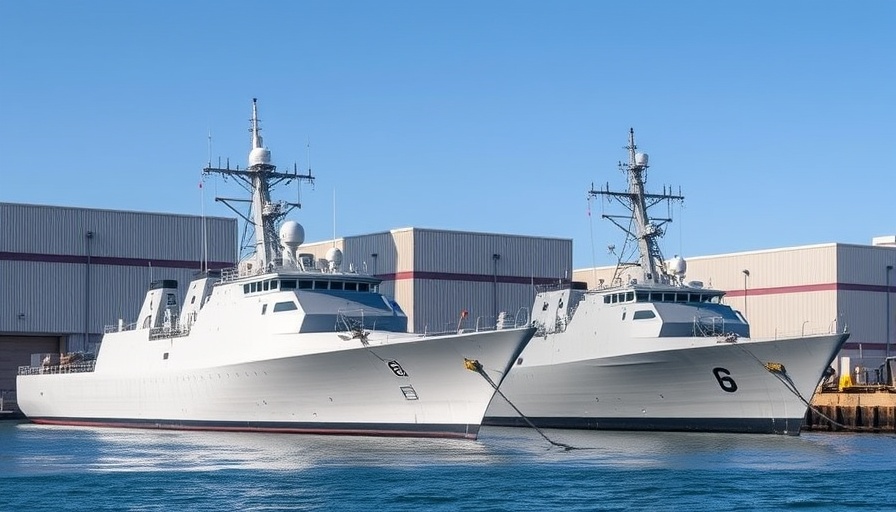
The Significance of Austal's Strategic Agreement
Austal Defence Australia is marking a pivotal moment in the maritime industry with its recent Strategic Shipbuilding Agreement (SSA) with the Australian government. This agreement not only designates Austal Defence as the primary shipbuilder for Tier 2 surface combatants but also reinforces Australia’s capability to independently manage its naval shipbuilding needs. As the world increasingly values self-reliance in defense, especially amid global uncertainties, this partnership lays a foundation for a sovereign and resilient local supply chain.
Details of the Strategic Shipbuilding Agreement
This long-term agreement allows for a maximum duration of 15 years, ensuring a steady shipbuilding presence in Henderson, a key area for naval activities. Under this SSA, Austal Defence Australia is tasked with several significant projects, including the LAND8710 Landing Craft Medium (LCM) and Landing Craft Heavy (LCH) programs. A timeline is already set for the production of 18 LCMs over the next eight years and eight LCHs by the end of 2025.
Implications for the Local Workforce
What makes the SSA even more compelling is its promise to bolster the local workforce. Austal plans to oversee a specialized team dedicated to executing these Tier 2 naval programs. This solidifies job security for shipyard employees and empowers local communities in Western Australia. The pact emphasizes producing naval vessels in Australia, thus promoting homegrown expertise and innovation.
How This Impact the Broader Defense Sector
The strategic agreement aligns with broader defense initiatives, including the sustainment of the Collins Class submarines and fleet support.Furthermore, the engagement features a Target Cost Incentive model with “gainshare/painshare mechanisms.” Such arrangements incentivize performance improvements while managing costs effectively. This sophisticated approach not only streamlines processes but also strengthens the overall defense posture of Australia.
Counterarguments and Diverse Perspectives
While the SSA is certainly a step forward, it’s crucial to consider differing perspectives. Critics may raise concerns about the capacity of Austal to meet the stringent demands required for national defense projects, especially considering the complexities involved in naval architecture and engineering. However, CEO Paddy Gregg emphasizes the company’s track record and the strategic importance of while fostering a resilient domestic industry. This mixture of local dependency and strategic partnerships is key to responding to global challenges.
What Does This Mean for the Future?
The SSA with Austal Defence Australia promises to elevate not just the local shipbuilding capabilities but also positions Australia as a noteworthy player in the global defense narrative. As geopolitical tensions rise, having a strong and independent shipbuilding industry can provide Australia with a security buffer and leverage in international diplomatic discussions.
Your Take on Naval Developments?
In conclusion, the agreement signifies a deeper commitment to elevating Australia’s naval capabilities and investing in local talent. As developments unfold, stakeholders and communities alike have a vested interest in following Austal's progress. What do you think about this strategic move? Engage in the conversation, and share your thoughts on how these changes might shape the future of Australia’s maritime industry.
 Add Row
Add Row  Add
Add 




Write A Comment